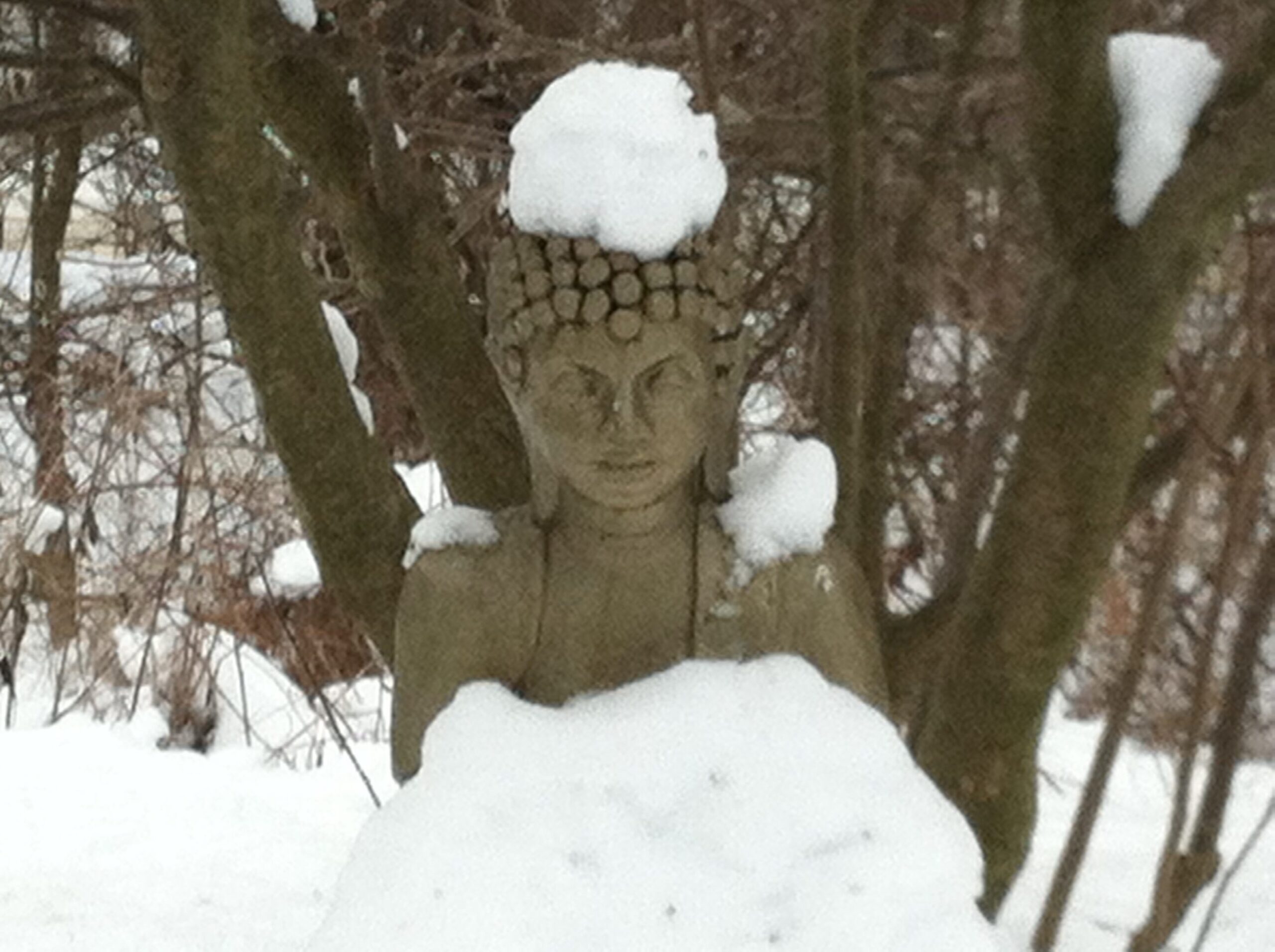6. To rely on spiritual friends
When I rely on spiritual friends, / My faults and negative behaviors wane,
Constructive qualities and skills expand / Just like the brilliance of the waxing moon.
To hold authentic friends like this more dear / Than even my own physical welfare:
This is the way a bodhisattva trains.
Audio verse 6
Audio verses 1-6
The commentaries make it clear that in the Tibetan Buddhist literature “spiritual friend” (literally, friend of virtue) mainly refers to an authentic teacher, but both Dilgo Khyentse and Geshe Jampa Tekchok also include our spiritual community under this umbrella.
Dilgo Khyentse says, “Authentic spiritual friends are those who have received teachings from the same teacher as yourself and, detached from worldly concerns, are devoting themselves to practice in secluded places.” Geshe Jampa Tegchok says, “Good companions also include our fellow Dharma students at our Dharma center or monastery…. Even if they do not have great positive influence over us such that they cause our faults to decrease and our qualities to increase greatly, we are still inspired by seeing them study and practice to the best of their ability. ” Our spiritual community can also offer support and help us bridge the gap in the event that confidence in a spiritual teacher is shaken at some point.
In the Mahaparinirvana Sutra (pages 193-199), the Buddha introduces a set of instructions called the four reliances. It may seem ironic that this verse from Togme Zangpo is about the importance of relying on a spiritual teacher, yet the first reliance taught by the Buddha is to “rely on the dharma, not the person.” The point seems to be that if our faith in the dharma is entirely dependent on our faith in a teacher, we may find ourselves in trouble when the teacher is no longer with us or disappoints us in some way.
Thus, even while relying on our teachers to inspire and guide us, if we don’t internalize their instructions in our own mindstream through our own practice, we will not develop a firm foundation in the dharma, and our faith may crumble under duress and leave us and the boat of our precious human existence unmoored.
What are the qualities of an authentic teacher? Gampopa, in the Ornament of Precious Liberation , lists an authentic spiritual teacher or mentor as one of the three prerequisites for setting out on the path to awakening, and cites three traditional lists of qualifications we should look for. The shortest, from Shantideva, says only two qualities are necessary: that s/he “1) is skilled in the meaning of Mahayana and 2) maintains the noble bodhisattva discipline.” The longest list, from a sutra, includes eight qualities: “1) to have a bodhisattva’s moral discipline, 2) to be learned in the bodhisattva scriptures, 3) to have realization, 4) to be kind and loving to one’s followers, 5) to be fearless, 6) to be forbearing, 7) to be of untiring mind, and 8) to know how to use words.” How does our teacher or prospective teacher measure up to these qualifications?
In his recent book The Guru Drinks Bourbon? Jamyang Khyentse has a whole chapter on this topic, “Being Savvy Analyzing a Guru, ” with a lengthy checklist for both the “good guru” and the “bad guru.” His criteria for a good guru include that s/he has realized the ultimate view; has a lineage; is humble; trusts in the laws of karma; has tamed the body, speech, and mind; abides by the Buddha’s rules of Vinaya, Bodhisattvayana, and Vajrayana; and fears wrongdoing.
Ringu Tulku, in Path to Buddhahood, advises, “Finding a perfect master is without doubt rare and difficult, but if we find a teacher endowed with most of these qualities, we can certainly ask him or her to become our guide. If he has but a few of these qualities, perhaps it is wiser to refrain.” It is up to us how many of these qualities we may require our teacher to embody; which ones, if any, we can be flexible about or may not feel confident we can fully assess; and which ones, if any, we consider indispensable.
Ringu Tulku also indirectly invokes the first reliance: “It is important to remember that no matter how great the knowledge and qualities of the chosen teacher, in the end it is the student who must learn and practice. One’s own studies and practice are the most important factors.”
Once we find a teacher we feel is authentic, what is our part of the bargain? Gampopa says there are three ways to rely on the teacher: 1) through respect and service, 2) through reverence and devotion, and 3) through sincere Dharma practice. Dilgo Khyentse says we should serve the teacher and “one-pointedly put whatever instructions he [gives us] into practice.” In short, we need not only to examine the teacher’s authenticity, but also our own authenticity as a student.
This topic is continued in verse 6, part 2, which addresses why and in what way we are encouraged to see the teacher as Buddha, and how to respond if a teacher appears to compromise his or her authenticity in one or more respects (see Mingyur Rinpoche’s article, linked below).
If you missed the link above, the four reliances may be found here in the fabulous rigpa wiki, where you can find an entry for virtually any dharma term.
Lion’s Roar just posted an article by Mingyur Rinpoche that is very helpful in sorting out these issues.
The index of the study guide and recordings of the classes are here.
Next post: Verse 6, part 2
Next practice: Verse 7, the last of the preliminary verses
The complete study guide: click here (see “about the 37 practices study guide” at top of page for orientation if needed)
